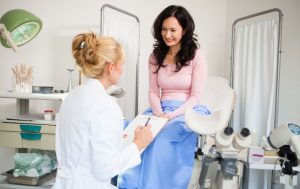BSR preparation in gynecological practice
Clinical results of the use of BSR preparation in gynecological practice.
BSR is an adaptogen; Comprehensive experimental and clinical studies were carried out.
Studies have revealed a wide range of therapeutic effects of the product “BSR”. Normalizing endocrine-metabolic processes, the drug is indicated for endocrine-dependent diseases of the female genital organs – uterine myoma and endometriosis, dishormonal diseases of the mammary glands, and some forms of endocrine infertility. The drug has a pronounced immunomodulating effect, the effect on all parts of the immune system. In addition, BSR enhances antioxidant and hypersensitizing activity, affects the hepatobiliary and protein-forming functions of the liver, since ubiquinones are hepatoprotectors of a metabolic type of action. BSR has a positive effect on blood coagulation.

Thus, the BSR preparation can be characterized as an immune – endocrine adaptive agent.
We used BSR in 38 women with uterine myoma and in 29 patients with internal endometriosis. The group of patients with uterine fibroids included women of reproductive age from 24 to 38 years. All patients were selected on one basis – the manifestations of the disease were asymptomatic, therefore, there were no indications for surgical treatment, such patients are subject only to observation. Tumor sizes were within 5 to 9 weeks of pregnancy. Of 38 women, 11 patients revealed neuro-exchange changes: obesity, transient hypertension, hyperglycemia. According to the limitation of the detection of uterine fibroids, the patients were divided into 2 groups: the first with the duration of the disease up to 3 years (20 women) and the second – more than 3 years (18 patients). Observation and treatment was carried out under dynamic ultrasound control.
There were no side effects during treatment, no one complained of dyspeptic disorders, no signs of allergy were noted.
During the treatment process, every fourth woman at 3–4 months of treatment due to a violation of the ratio of Na and K showed a slight increase in the size of myomatous nodes, all taking place at 5–6 months of treatment. In a group of 20 women with disease duration up to 3 years, every third (7 out of 20) uterine fibroids ceased palpation after 7 months of treatment and was determined by ultrasound. Subsequent observations within 3 to 9 months indicated a complete cure.
In the group of women with a disease duration of more than 3 years, every second (in 9 women out of 18) – the tumor size decreased significantly. According to clinical observation and ultrasound monitoring, there were no cases of tumor growth progression during treatment with BSR.
It is interesting to note that out of 11 women with neuroendocrine manifestations, before clinical treatment with BSR, the clinical manifestations of diencephalic syndrome significantly decreased in 7 patients. It should be noted that in women with a smaller concentration of the disease, the tumor after treatment had a diffuse character, the fibrous component was not pronounced.
Patients with internal endometriosis were also in reproductive age. Clinical manifestations were characterized by mild pain in the second phase of the cycle and spotting ,spotting from the genital tract before and after menstruation. Of 29 patients, 6 women had a disease duration of up to 3 years, and in 23 patients – more than 3 years. After treatment with BSR according to the scheme described above, clinical and ultrasound signs of internal endometriosis were completely eliminated in 8 women out of 29 patients. Moreover, a complete cure occurred in all 6 patients with a small (up to 3 years) disease duration.
In Gynecological clinics patients with initial manifestations of fibroids and internal endometriosis, a good effect was obtained from therapy with BSR.
